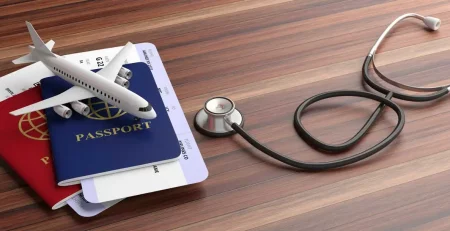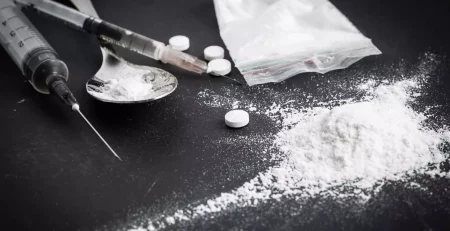Why Does Meth Cause Acne?
The Physical Effect of Meth Abuse on Your Skin
Methamphetamine abuse, commonly known as crystal meth addiction, is a life threatening form of substance abuse that causes skin sores, damages blood vessels, and causes skin picking and meth hallucinations. Many individuals relate meth addiction to mental health effects and intense physical signs of abuse.
One of the most prominent visible symptoms are the open wounds and skin infections, usually caused by compulsive scratching, excessive sweating, and the false assumption of an infestation of meth bugs.
But why does meth cause acne in those who previously enjoyed a more attractive physical appearance before using meth regularly. In this article, we break down how Icarus Behavioral Health provides treatment for physical manifestations like pus filled sores, mouth sores, and meth acne.
You’ll learn the physiological reasons behind skin picking, the onset of meth skin, body meth sores, and why hope is around the corner thanks to Icarus Behavioral Health in New Mexico.
Get Effective Meth Detox and Rehab Options at Icarus
What Is Meth Use and How Does It Work?
The synthetic drug known as crystal meth stimulates the central nervous system, producing an an extreme rush of euphoria and energy with long periods of increased alertness. It causes the brain to release abnormal amounts of dopamine, the chemical responsible for feelings of pleasure and motivation.
While the initial effects are intense, the drastic come-down and long-term impacts are dangerous and potentially life-altering. Extended use of heavy meth users impacts nearly every system in the body, including blood vessels, a weakened immune system, and other skin conditions caused by meth addiction.
The Connection Between Meth Users and Skin Irritation

The skin is the largest organ in the body, and one of the first to show visible signs of meth use. When meth use becomes perpetual, it leads to a plethora of crystal meth effects that directly and indirectly damage the person’s skin. Some of the most common skin signs of chronic users include:
- Severe acne and inflammation
- Open sores and ulcers
- Meth mites
- Meth acne
- Dry, flaky skin
- Premature wrinkling and sagging skin
These symptoms are more than cosmetic challenges; they are signs of intense physiological and neurological dysfunction.
Why Meth Causes Acne
Let’s take a deeper dive into the dynamics that explain why meth users develop new skin sores:
1. Hormonal Imbalance
Meth use triggers the release of stress hormones like cortisol and adrenaline. These hormones stimulate the oil glands beneath the skin, leading to open sores and restricted blood flow.
- Excess oil production
- Clogged pores that trap bacteria
- Inflammation and breakouts
This hormonal disruption creates the perfect storm for cystic, painful acne, which usually occurs on the face, chest, back, and shoulders.
2. Dehydration and Dry Skin
While meth does enhance oil production, it will frequently dehydrate the body. It also narrows blood vessels, reducing blood flow and restricting circulation. The result is skin that becomes:
- Dry and flaky
- Irritated
- Incapable of healing properly
The combo of extra oil and the buildup of dry skin creates additional clogged pores, leading to intense meth sores and acne.
3. Neglected Hygiene
Meth addiction leads to many users going for days without proper hygiene or sleep. This leads to meth mites and other challenges associated with this dangerous form of drug abuse. When a user participates in a meth binge, especially after injecting meth, basic tasks like face washing, showering, and eating are ignored. This leads to:
- Bacteria and dirt build up on the skin
- Trapped sweat and toxins
- More intense meth sores on the skin and meth mouth sores
Meth Sores and Skin Picking

One of the most unnerving symptoms of drug use involving meth is known as formication, or a sensation that leads users to believe bugs are burrowing under the skin. This leads to compulsive scratching and is considered a form of meth psychosis.
These meth sores can damage the immune system because of infection, but are treatable with the right meth addiction treatment. Users who report meth shores often exhibit the following:
- Open wounds and lesions
- Scabs that resemble severe acne
- Secondary bacterial infections
Get Accredited Treatment Programs at Icarus – Call Now!
Additional Skin Conditions Caused or Worsened by Meth
Besides acne and meth sores, other dermatalogical conditions are possible, including:
- Open abscesses
Chronic skin picking, combined with unsatisfactory hygiene, can lead to abscesses. These pus-filled infections resemble deep cystic acne but are often much worse, requiring medical intervention.
- MRSA
Because of lowered immunity and broken skin from meth sores, users are more vulnerable to antibiotic-resistant MRSA, one of the more dangerous infections one can contract.
- Poor Wound Healing
Meth impacts circulation and the function of your immune system, delaying your skin regeneration. Even minor cuts, scratches, and pimples can turn into damaging wounds.
- Meth Mouth and Facial Skin Problems
Severe tooth decay and gum disease, another sign of meth addiction, can lead to meth sores around the jawline and surrounding facial tissue.
The Role of Malnutrition and Sleep Deprivation

One of the other damaging effects of meth addiction is malnutrition and lack of sleep. The following section dives deeper into the impact of these side effects.
- Nutritional Deficiencies
Meth drastically decreases your appetite, leading to rapid weight loss and malnutrition issues. The body misses vital nutrients like:
- Zinc
- Vitamin A
- Vitamin C (collagen protection)
This makes acne worse and slows recovery from wounds and breakouts.
- Sleep Deprivation
Meth keeps users awake for days on end. This can even lead to weeks at a time with no sleep. The lack of rest elevates inflammatory cytokines in the body and impairs the skin’s ability to heal, causing:
- Acne flare-ups
- Dark circles and a dull complexion
- Increased cortisol levels
Long-Term Skin Aging from Meth Use
After an extended period, meth leads to rapid physical aging, often referred to as meth face. What does this look like for users?
- Sagging skin
- Sunken cheeks
- Loss of elasticity and glow
- Wrinkles and thinning skin
Meth lowers collagen levels and elastin production, both critical for firm, youthful skin. Coupled with dehydration, stress, and poor nutrition, this creates a prematurely aged appearance. This happens in users under 30 on some occasions.
Can the Skin Recover After Quitting Meth?

The skin can heal and rejuvenate after quitting meth. However, this takes time, support, and effort. The most effective ways to heal after you overcome meth addiction includes:
Detox and Healing
Once meth use stops, the body automatically begins to repair itself. The regenerative process of the skin can begin in as little as a few weeks, but full recovery can take months or years, depending on the extent of the damage.
Dermatological Treatment
Post-meth recovery can include:
- Acne treatments. Medicines like benzoyl peroxide, retinoids, and antibiotics are all helpful.
- Scar reduction therapy.
- Hydration and moisturizing.
- Laser and chemical peels.
Nutrition and Lifestyle Changes
A diet rich in skin-loving nutrients (vitamins A, C, E, zinc, omega-3s) supports healing. Proper hydration, adequate rest, and plenty of exercise can accelerate recovery.
Therapy for Picking
Cognitive behavioral therapy (CBT) can help reduce compulsive skin-picking and address underlying mental health conditions like anxiety, PTSD, and addiction.
Up To 100% of Rehab Costs Covered By Insurance – Call Now!
Icarus Behavioral Health Offers Meth Recovery Support
Meth can wreak havoc on the mind, body, and soul. The acne and sores caused by this drug aren’t just a cosmetic concern; they’re warning signs of more profound physical and mental trauma.
However, just as meth can impact the skin negatively, the body can heal over time. This is where Icarus Behavioral Health in New Mexico steps in. We help our clients learn that time heals all, and with patience, persistence, and support, life can change for the better.
Recovery doesn’t mean just dropping your habit; instead, it is rebuilding every facet of your life, from your brain chemistry to your skin cells.
If you or someone you love is struggling with meth addiction, contact Icarus Behavioral Health today, and we’ll guide you to the healthy side of recovery.













